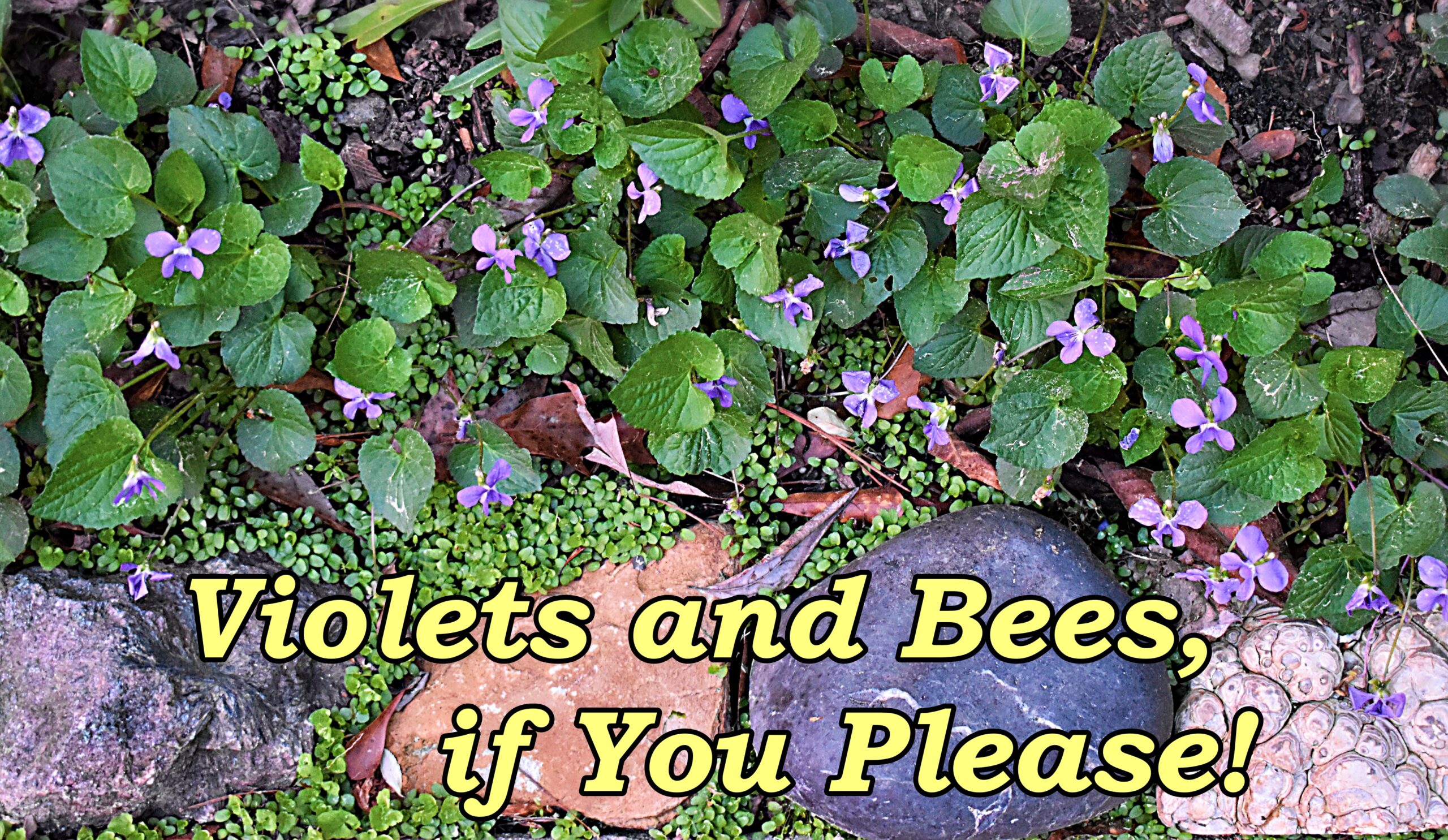Violets! I know. You didn’t buy them. They didn’t cost you anything to get them; in fact, you may have spent money to try to get rid of them. We are a consumer society; we value what we pay for. I’m surprised that anyone values beautiful sunsets or a moon-lit night anymore, or do they?
I saw my first violet today, it struggled up between the sidewalk and a rock that borders the garden in front of our home. Why is it so amazing? Because it provides both pollen and nectar to the early emerging bees. Oh, and I just saw my first opened ground-dwelling bee nest.
Spring is here as far as many trees are concerned! Today I heard my first pollen count on the morning weather report! We are already in the medium to high range! Yes, it still gets cold at night so I will not be putting out any plants that are susceptible to a late freeze, but I’ve seen early cherry trees blooming and my ground-dwelling bees are waking up. What do you have to feed them????
The pollen today is alder and juniper (from pollen.com) Alders are wind-pollinated, but bees are happy to take the pollen anyway, but there is no nectar for them. Junipers are dioecious, only the male trees will have pollen and again, there is no nectar because junipers are also wind-pollinated. With a high pollen count, the bees will be fine, right? Wrong! Bees need nectar for energy. Pollen provides protein and other nutrients. Most pollen is used by bees as larvae food. To keep the buzz going they need nectar.
Here is a list of high nectar, early spring plants:
Bellwort (Uvularia) Perennial
Dutchman’s Breeches (Dicentra) Perennial
Jacob’s Ladder (Polemonium reptans) Perennial
Violets (Viola) Perennial
Waterleaf (Hydrophyllum) Perennial
Wild Geranium (Geranium maculatum) Perennial
Current and Gooseberry (Ribes) Shrub
Ash (Zanthoxylum) Tree
Black cherry (Prunus serotina) Tree
Wild Plumb (Prunus americana) Tree
Willow (Salix) Tree
Of the above plants, the only ones that provide both pollen and nectar are violets, black cherry, and wild plum, but with violets, you don’t have to wait years to start feeding the bees and having beauty in your garden.
Obviously, the volume that trees can provide will by far overshadow anything we can put into our gardens; I encourage you to plant trees for the years to come and improve your environment.
Meanwhile, that lovely little plant that some people consider a weed has everything bees need. When queen bumble bees come out of the ground, they need energy food! The same is true for all emerging bees. Violets are right down there with them, they are not hard to find, unless, of course, they frighten some poor human who runs in terror to get a shovel to dig it up, or worse, an herbicide to kill it contaminating the other plants and soil. Did I mention that violets tend to be herbicide-resistant? Stop spraying!
If that is not enough, violets are also a host to the Great Spangled Fritillary. So, if you find violets where you don’t want them, count your lucky stars that you have free pollinator plants and move them to your garden. You can even put them in your veggie garden as they are deer resistant and the leaves are high in vitamins A and C and can be used in salads or cooked as greens. The flowers can be made into candies and jellies. Violets are wonderful groundcovers that can take full sun and our clay soil but prefer part shade and loamy soil. They are spread by seed and rhizomes. Their seeds have elaiosomes which ants love to eat and carry off the seed for a great meal, they then discard the seed, usually underground. This is why you see violets pop up in unusual places. Violets are also great in rock gardens.
Our cultural mentality is, “If it didn’t cost me anything, then it isn’t worth anything.” That is the mentality that has been destroying the environment and the truth is that these “free” things like good water quality, clean air, native plants and animals like insects, birds, etc. are invaluable to our existence because they are part of the environment that keeps the production of our food going. Change your value system and see the violet for the gift that it is.
For further reading see this article at Penn State Extension: https://extension.psu.edu/underused-native-plants-common-blue-violets

